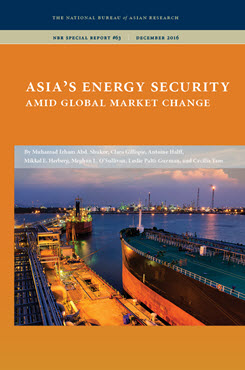Asia's LNG Prospects
Finally Entering a Golden Age
This essay examines the competitiveness of liquefied natural gas (LNG) in the fast-evolving Asian natural gas market and assesses key trends observed over the past two years, the demand response to a lower-price environment, and the implications of sustained competitive LNG prices for Asia’s long-term energy mix.
EXECUTIVE SUMMARY
MAIN ARGUMENT
Current (and possibly sustained) low prices will stimulate renewed or new demand for LNG among Asia’s energy giants (China and India) and emerging importers in South and Southeast Asia, while tempering the decline in LNG demand in the more mature importers (Japan and South Korea). While prices are the most important driver of future Asian LNG demand, air pollution concerns—notably in major Asian cities—will provide a compelling motivation for countries to alter their energy mix by increasing LNG/gas use as an alternative to coal in power generation, partnering with renewables for use in creating “smarter cities,” and using LNG as an alternative to oil products in transportation.
POLICY IMPLICATIONS
- Given that LNG will continue to play a large role in the two most mature Asian LNG-importing countries—Japan and South Korea—they have a strategic interest in making sure that LNG is priced competitively and transparently in the long term for economic, security, and environmental reasons.
- China sees competitively priced LNG as an opportunity to increase the contribution of the fuel in the country’s energy mix in order to curb air pollution and provide leverage in contract negotiations with suppliers of pipeline or domestic gas.
- Emerging Asian LNG importers have not traditionally used LNG for power generation because of its lack of price competitiveness (notably compared with coal). But low prices have opened up markets in new importer countries and increased the appetite for LNG in both power and non-power sectors, which will have a positive impact on curbing emissions and improving air quality.
- Demand for city gas (for heating, cooking, and transportation) is less influenced by price; instead, the main drivers are safety, environmental, and health concerns, which will only increase with the rise of Asia’s megacities. Following the 21st Conference of the Parties in Paris, more governments are ready to pay an environmental premium to promote switching from coal to LNG, as long as gas prices remain in an acceptable range relative to coal prices.


